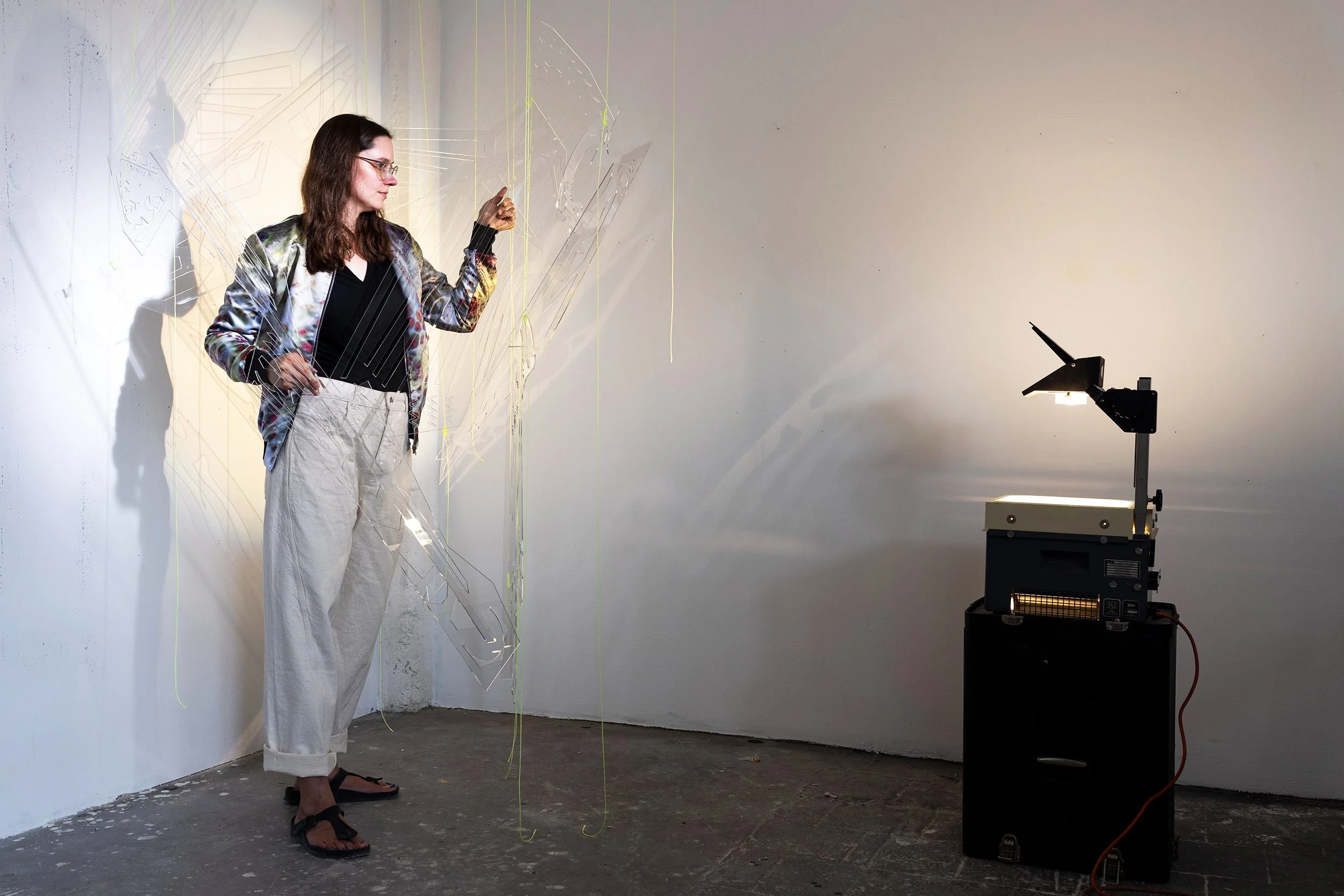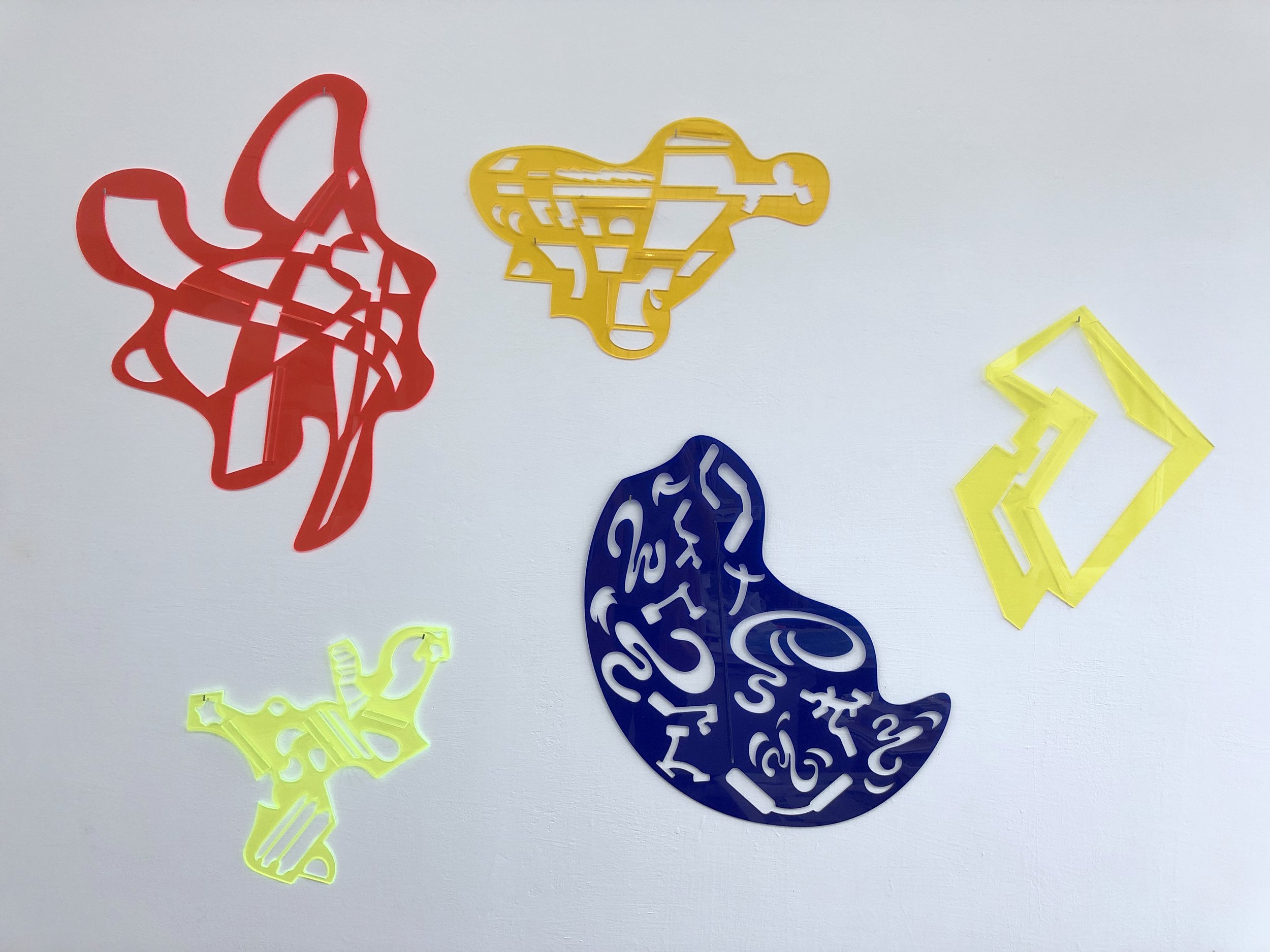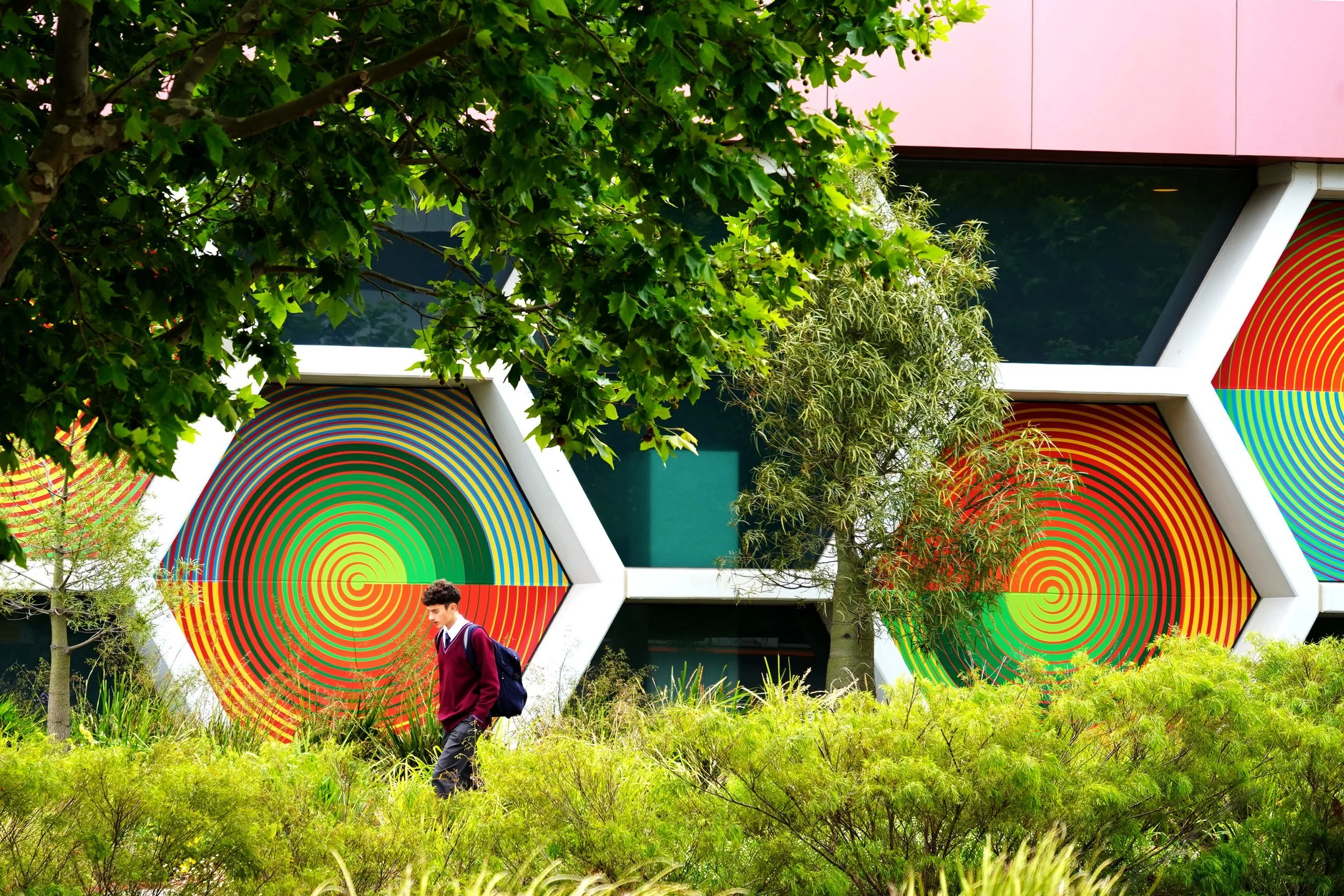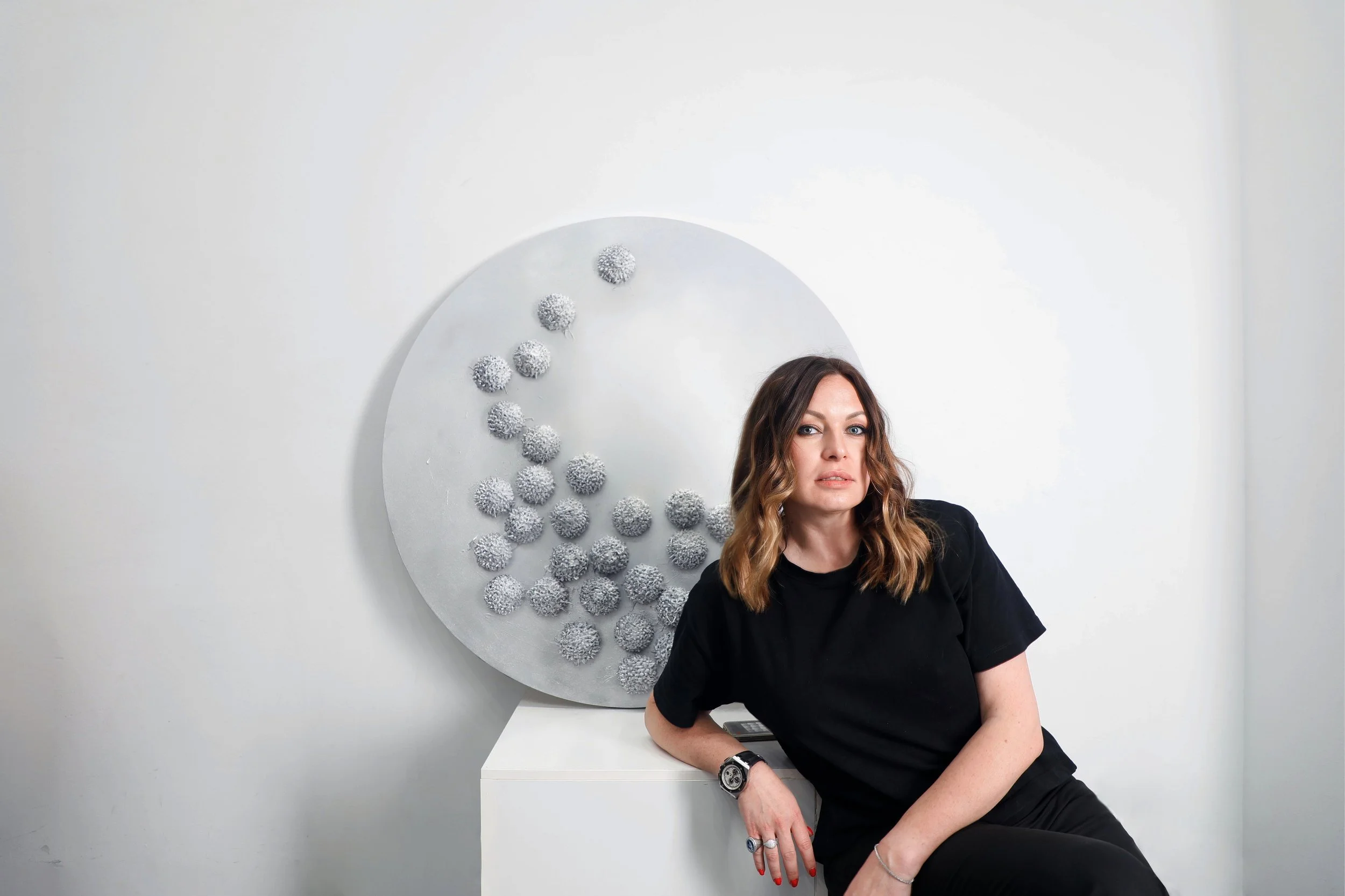10 Questions with Evelyn Möcking
Evelyn Möcking (1984 in Bielefeld, Germany) lives and works in Düsseldorf, Germany. She completed her Master of Fine Arts at the Hochschule für bildende Künste Hamburg. In 2022 she received the Neustart Kultur fellowship from Stiftung Kunstfonds as well as in 2021 the Neustart Kultur fellowship from Deutscher Künstlerbund. In addition to other project funding, in 2018, she received the 1st prize of the Kunstverein Ahlen as well as the 1st prize for the artist scholarship of the Lions-Hilfswerk in Düsseldorf. Her art has been shown at the Staatliche Kunsthalle in Baden-Baden, as well as at the Kunstmuseum Heidenheim and the Centre des Science et des Arts de Saint-Ouen and the Konrad Lorenz Insitut in Klosterneuburg, Austria.
Evelyn Möcking - Portrait | Photo by Gregor Guski
ARTIST STATEMENT
Evelyn Möcking is an interdisciplinary artist who works with drawings, sculpture, sound, and installations. Experimenting with materials and methods from science and nature plays an important role in her work. To this end, she uses both analog and digital media and scientific methods.
The starting point of her artistic practice is the search for phenomena from nature, science, and art and the investigation of the respective materials on their inherent aesthetics. Möcking works 'dialogically' with her materials - in the confrontation with the source material, it provides her with specifics to which she reacts.
Currently, Evelyn Möcking is designing large-scale stencils that are sculptures in their own right, but also form the basis for her drawings. Through color shifts and the development of an abstract language of forms, she develops a system of signs that is oriented towards computer graphics, 3-dimensional illusions as well as virtual spaces.
In addition to her own art, Evelyn Möcking runs the art space PALACE in Düsseldorf together with the artist Christoph Görke, which presents young contemporary artists in the urban space. She is also a member of Entropicals, a German-French artist collaboration.
Guardian of the Bridge, Photography, 2021 © Evelyn Möcking
INTERVIEW
First, tell us a little about your background and studies. What kind of education or training helped you develop your approach to art?
Already as a child, I painted and tinkered a lot. Then I chose an advanced art course in school and in my youth I already went to many exhibitions. After school, I was interested in theater and performance, so I first studied cultural studies with aesthetic practice in Hildesheim. But then I realized that I wanted to do art after all. At that time, I was fascinated by taxidermy and the scientific method, so I worked in biological taxidermy at the Museum of Natural History in Mainz for a year. At the same time, I already had a studio with my boyfriend, Daniel Nehring (he is also a visual artist). After that, I did a master's degree in fine arts at the Hochschule für bildende Künste in Hamburg and was in Pia Stadtbäumer's class there, but I also did a lot of art studies. For me, theory and practice were always a good complement as well. The time in Hamburg was very intense. After graduating, I moved to Düsseldorf to live with my boyfriend, who was still studying at the academy in Düsseldorf at the time. Here I felt very liberated and quickly made contact with the art scene. That was very good for me. For two years now, I've been running an art space in Düsseldorf together with the artist Christoph Görke (the name is PALACE). In addition to my free work in the studio and my own exhibitions, the PALACE is a great and important addition.
You are a versatile multidisciplinary artist, but what is your preferred medium of choice, the one you will always return to?
Yes, I like to work with many different media. I mostly make designs on the computer, experiment, and create work in the studio. In a way, I always come back to the studio for silent work. Here I can experiment and focus freely. In a way, I always come back to scientific methods or tools. Even though it's used aesthetically, of course, and I don't have any scientific pretensions, sometimes my studio is more like a laboratory.
Coloures only exist in light, 3 vector graphics, size variable, 2021 © Evelyn Möcking
Coloures only exist in light, 3 vector graphics, size variable, 2021 © Evelyn Möcking
You work with drawing, sculptures, installations, and, recently, stencils. What do these different mediums have in common, in your opinion? And how do they influence each other in your practice?
Actually, I have always worked in dialogue with my materials. This may sound strange, but I often use materials that change or that give me something to work with, such as the colour archive that I have created. I collect these organic colours and use them again and again for different glass sculptures. I think it's great that organic materials have a life of their own and that I have to work with them. You can't control everything in the process, and I find that fantastic on the one hand and always a little stressful on the other. It challenges me! But that's also how I always come up with other ideas or forms. In principle, it is similar to the templates. Here, too, I work for drawings in dialogue: My drawing is created in which I initially work a lot with the templates. In the further drawing process, I then react more freely to the drawing. While drawing, I then come up with ideas for further templates and so on. That's often the case - somehow, one work always leads to the next work. It's like ping-pong.
What is your aim as an artist? What would you like the public to get away from your work?
Even though the working process is very important to me personally and elementary for my work, I always present only finished works. My studio is full of work that I have not yet exhibited, because I need the production to change, but for exhibitions, I am very selective. There I want the audience to see work that is on point for me. Aesthetically and in terms of content. With my organic works, for example, it would be great if the audience felt the fascination for the material as much as I do. The glow of the colours, the subtle nuances, the beauty of nature. You can't see that at all in the photos. With the drawings, I would like the recipient to be able to perceive the different levels, the interlacing, and the details. Perhaps a similar fascination as with a microscopic photograph. But in the end, every recipient decides for himself or herself what he or she perceives, and that is also right.
Let's talk about your creative process. Can you guide us through the whole process, from the first idea to the final product?
Most of my works result from previous works of mine and practically build on each other. Mostly this happens through experimentation and serial work, although it was a little different with the drawings at first. Two years ago, I was pregnant and had to adjust my way of working. At this time, my studio was a real little lab, and I did a lot of fabric work with my colour archive and also experimented with different chemicals. Then I had to change my way of working. During that time, I was alone in an artist residency by Mark Dion for ten days and only drew. I was really addicted. For the first drawings I used all kinds of objects as rulers, I found at the place, but then I was looking for other shapes and structures. So I started designing templates digitally and having them made out of plexiglass. While I was using the first templates for drawings, I came up with more shapes for them while drawing. And in the further process of designing, the templates became more important to me as sculptures in their own right.
Konstruktion 02 (detail), Glass, stainless steel, substrates from plant products and food colouring as well as slush syrup, 180x40x35 cm, 2021 © Evelyn Möcking
Out of nature, Glass, liquid from extracted red cabbage and turmeric, silicone, 23x33,5x1 cm, 2020 © Evelyn Möcking
Speaking of your work, you use different materials, from glass and plexiglass, to more natural materials. Can you tell us more about it? What do they represent, and how do you use those materials to communicate your message?
Natural materials are important to me to get access to nature. Especially my time at the Natural History Museum in Mainz shaped me for this. That was purely about research, but I myself had the feeling that I suddenly had a completely different approach to nature, or to life and death. I feel the same way about all my organic work: Here, I find the undisputed beauty of nature but also its transience, which life brings with it. For me, this is a very important aspect. With my colour archive, for example, I am always fascinated anew by how intense the colours are and how they touch me, but also how quickly or slowly some colours change. That's why I also work with glass sculptures to present the colours - glass makes the colours appear as intense as possible. Besides, it is laboratory glass, which holds the alcohol that is part of the colour archive without any problems. And, of course, the proximity to the laboratory and alchemy is also evident here. It is quite different with the templates. Here I need the lightness of Plexiglas, the transparency, the flexibility, and the proximity to the ruler. And the possibility of transferring my digital design into the material as well as possible. For me, this is then an artistic tool that I use and must be as functional as possible, although each template is also an independent object in the end.
Is there any other medium or technique you would like to experiment with?
As far as materials are concerned, I am very open. I would like to work again with different microscopes, but also with ceramics or plastics. I have also experimented with sound a few times, so I would also like to work with that again. And 3-D interests me more and more. My friend, Daniel Nehring, works a lot with it, and last year we did some experiments together. I'd like to pick up where we left off.
Templates drawings 04.22.02, Polychromos colours on paper, 42x60 cm, 2022 © Evelyn Möcking
Templates drawings 09.21, Polychromos colours on paper, 42x60 cm, 2021 © Evelyn Möcking
Templates drawings 04.22, Polychromos colours on paper, 42x60 cm, 2022 © Evelyn Möcking
Templates drawings 10.21, Polychromos colours on paper, 42x60 cm, 2021 © Evelyn Möcking
Let's talk about the future. What are you working on now, and what are your plans for the future? Anything exciting you can tell us about?
Right now, I'm working on a new drawing series where I'm working purely with pencil and graphite. This is tremendously inspiring for me, where before, I was fully fixated on colour. Interestingly, I've only been working with pencils since I had coloured templates made. Besides that, I have ideas for large collages that I want to try out soon. And other templates, which include more organic shapes, are already in the works.
What do you hope to accomplish this year, both in terms of career goals and personal life?
This year I would like to visit a lot of exhibitions and openings. That's what I missed in Covid time. Even though I found the pandemic period to be extremely restful at times (I finally had plenty of time to focus), I completely neglected networking. I really want to change that. Privately there is a lot going on with us: We have a daughter who is just 14 months old. Watching them grow up, their curiosity, and their joy in small things is incredibly beautiful and enriching.
Finally, any shows, galleries, or publications where our readers can find your work?
I'm afraid I can't talk about all the exhibitions yet. But in Munich, for example, I am taking part in a group exhibition, and I am very much looking forward to it. Only female artists exhibit, and the works are thematically related to Eva Hesse. For me, as an artist and mother of a daughter, it is becoming more and more important that we as women support each other and become more visible. It always strikes me how male-dominated art and the art market are. I hope that this will change even more in the coming years. In addition, I hope that my friend and I will be able to do an artist residency in Iceland. I've always wanted to go to Iceland! Being able to live and work there would be a dream for me.



















